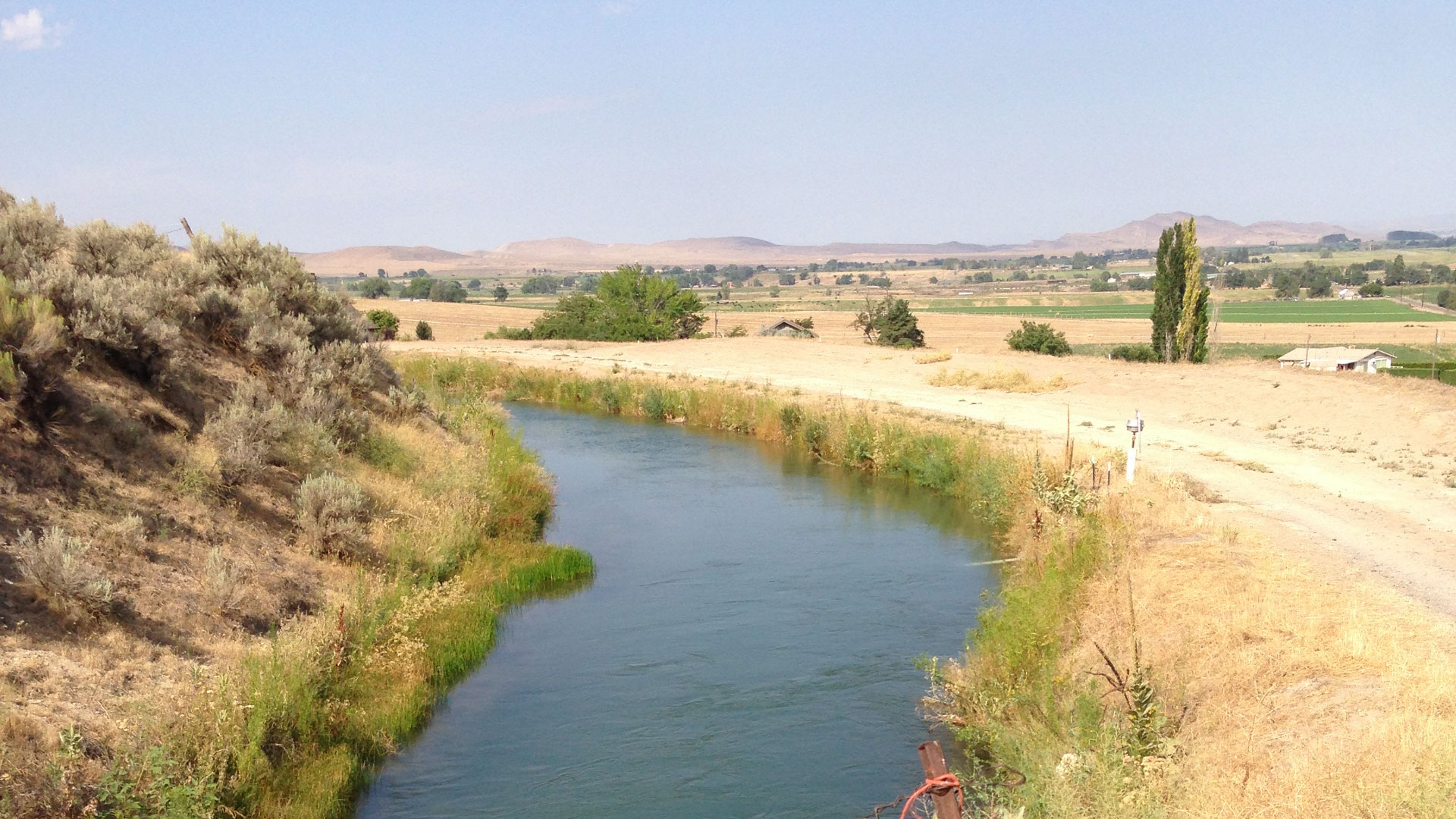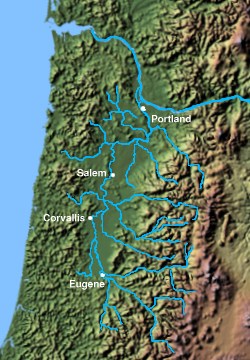|
Stromatinia Cepivora
''Stromatinia cepivora'' is a fungus in the division Ascomycota. It is the teleomorph of ''Sclerotium cepivorum'', the cause of white rot in onions, garlic, and leeks. The infective sclerotia remain viable in the soil for many years and are stimulated to germinate by the presence of a susceptible crop. Pathogenesis ''Sclerotium cepivorum'' is the asexual reproductive form of ''Stromatinia cepivora'' and is a plant pathogen, causing white rot in ''Allium'' species, particularly onions, leeks, and garlic. On a worldwide basis, white rot is probably the most serious threat to ''Allium'' crop production of any disease. This is a soil borne fungus and affects susceptible crops planted in infected soil containing sclerotia. The sclerotia that are developed in the life cycle can be spread to other fields by unsuccessful sanitation practices.The sclerotia can remain viable in the soil for years and germinate with a susceptible host to cause disease; therefore it is important to practice ... [...More Info...] [...Related Items...] OR: [Wikipedia] [Google] [Baidu] |
Fungus
A fungus ( : fungi or funguses) is any member of the group of eukaryotic organisms that includes microorganisms such as yeasts and molds, as well as the more familiar mushrooms. These organisms are classified as a kingdom, separately from the other eukaryotic kingdoms, which by one traditional classification include Plantae, Animalia, Protozoa, and Chromista. A characteristic that places fungi in a different kingdom from plants, bacteria, and some protists is chitin in their cell walls. Fungi, like animals, are heterotrophs; they acquire their food by absorbing dissolved molecules, typically by secreting digestive enzymes into their environment. Fungi do not photosynthesize. Growth is their means of mobility, except for spores (a few of which are flagellated), which may travel through the air or water. Fungi are the principal decomposers in ecological systems. These and other differences place fungi in a single group of related organisms, named the ''Eumycota'' (''true f ... [...More Info...] [...Related Items...] OR: [Wikipedia] [Google] [Baidu] |
Tulelake, California
Tulelake ( ) is a city in northeastern Siskiyou County, California, United States. The town is named after nearby Tule Lake. Its population is 902 as of the 2020 census, down from 1,010 from the 2010 census. Tulelake peace officers are authorized by state law, along with cooperation of the state of Oregon, to serve as and be recognized as peace officers within Malin, Oregon, along with the inverse being true for peace officers employed within Malin, wherein they are recognized as peace officers within Tulelake by the California Penal Code. History The first public auction of Tulelake land parcels took place on April 15, 1931. Over 100 lots were sold for prices ranging from $65 to $350. In 1937, the city was incorporated. Today there are over 400 housing units. Two World War II internment camps were located near Tulelake. Camp Tulelake was an Italian and German prisoner-of-war camp to the west of town, located on Hill Road along Sheepy Ridge. Also referred to as Gillems Bluf ... [...More Info...] [...Related Items...] OR: [Wikipedia] [Google] [Baidu] |
Biological Control Agent
Biological control or biocontrol is a method of controlling pests, such as insects, mites, weeds, and plant diseases, using other organisms. It relies on predation, parasitism, herbivory, or other natural mechanisms, but typically also involves an active human management role. It can be an important component of integrated pest management (IPM) programs. There are three basic strategies for biological pest control: classical (importation), where a natural enemy of a pest is introduced in the hope of achieving control; inductive (augmentation), in which a large population of natural enemies are administered for quick pest control; and inoculative (conservation), in which measures are taken to maintain natural enemies through regular reestablishment. Natural enemies of insect pests, also known as biological control agents, include predators, parasitoids, pathogens, and competitors. Biological control agents of plant diseases are most often referred to as antagonists. Biologic ... [...More Info...] [...Related Items...] OR: [Wikipedia] [Google] [Baidu] |
Invasive Species
An invasive species otherwise known as an alien is an introduced organism that becomes overpopulated and harms its new environment. Although most introduced species are neutral or beneficial with respect to other species, invasive species adversely affect habitats and bioregions, causing ecological, environmental, and/or economic damage. The term can also be used for native species that become harmful to their native environment after human alterations to its food webfor example the purple sea urchin (''Strongylocentrotus purpuratus'') which has decimated kelp forests along the northern California coast due to overharvesting of its natural predator, the California sea otter (''Enhydra lutris''). Since the 20th century, invasive species have become a serious economic, social, and environmental threat. Invasion of long-established ecosystems by organisms is a natural phenomenon, but human-facilitated introductions have greatly increased the rate, scale, and geographic range of ... [...More Info...] [...Related Items...] OR: [Wikipedia] [Google] [Baidu] |
Allium Triquetrum
''Allium triquetrum'' is a bulbous flowering plant in the genus ''Allium'' (onions and garlic) native to the Mediterranean basin. It is known in English as three-cornered leek, and in Australia and New Zealand as onion weed. Both the English name and the specific epithet ''triquetrum'' refer to the three-cornered shape of the flower stalks. Description ''Allium triquetrum'' produces stems tall, which are concavely triangular in cross-section. Each stem produces an umbel inflorescence of 4–19 flowers in January–May in the species' native environment. The tepals are long and white, but with a "strong green line". Each plant has two or three narrow, linear leaves, each up to long. The leaves have a distinct onion smell when crushed. Distribution and habitat ''Allium triquetrum'' is native to south-western Europe, north-western Africa, Madeira and the Canary Islands, where it grows in meadows, woodland clearings, on river banks and roadside verges from sea level to an elev ... [...More Info...] [...Related Items...] OR: [Wikipedia] [Google] [Baidu] |
Palouse Falls
Palouse Falls is a waterfall on the Palouse River, about upstream of the confluence with the Snake River in southeast Washington, United States. The falls are in height. The falls consist of an upper fall with a drop around , which lies north-northwest of the main drop, and a lower fall, with a drop of . It is in the Palouse Falls State Park. Geology The canyon at the falls is deep, exposing a large cross-section of the Columbia River Basalt Group. These falls and the canyon downstream are an important feature of the channeled scablands created by the great Missoula floods that swept periodically across eastern Washington and across the Columbia River Plateau during the Pleistocene epoch. The ancestral Palouse River flowed through the currently dry Washtucna Coulee to the Columbia River. The Palouse Falls and surrounding canyons were created when the Missoula floods overtopped the south valley wall of the ancestral Palouse River, diverting it to the current course to the Sna ... [...More Info...] [...Related Items...] OR: [Wikipedia] [Google] [Baidu] |
Crook County, Oregon
Crook County is one of the List of counties in Oregon, 36 counties in the U.S. state of Oregon. As of the 2020 United States census, 2020 census, the population was 24,738. The county seat is Prineville, Oregon, Prineville. The county Oregon Geographic Names, is named after George Crook, a U.S. Army officer who served in the American Civil War and various Indian Wars. Crook County comprises the Prineville, OR Micropolitan Statistical Area, which is included in the Bend, Oregon, Bend--Prineville, OR Bend-Prineville, OR Combined Statistical Area, Combined Statistical Area. History Crook County was established on October 9, 1882, by an act of the Oregon State Legislature.Hubert Howe Bancroft, ''The Works of Hubert Howe Bancroft: Volume XXX: History of Oregon: Volume II, 1848-1888.'' San Francisco, CA: The History Company, 1888; pg. 710. The county was named after General George Crook, a veteran of various battles against the indigenous peoples of Eastern Oregon in the middle of ... [...More Info...] [...Related Items...] OR: [Wikipedia] [Google] [Baidu] |
Marion County, Oregon
Marion County is one of the 36 counties in the U.S. state of Oregon. The population was 345,920 at the 2020 census, making it the fifth-most populous county in Oregon. The county seat is Salem, which is also the state capital of Oregon. The county was originally named the Champooick District, after Champoeg (earlier Champooick), a meeting place on the Willamette River. On September 3, 1849, the territorial legislature renamed it in honor of Francis Marion, a Continental Army general from South Carolina who served in the American Revolutionary War. Marion County is part of the Salem, OR Metropolitan Statistical Area, which is also included in the Portland-Vancouver-Salem, OR- WA Combined Statistical Area. It is located in the Willamette Valley. History Marion County was created by the Provisional Legislature of Oregon on July 5, 1843, as the Champooick District, one of the original four districts of the Oregon Country along with Twality (later Washington), Clackamas, and ... [...More Info...] [...Related Items...] OR: [Wikipedia] [Google] [Baidu] |
Treasure Valley
The Treasure Valley is a valley in the western United States, primarily in southwestern Idaho, where the Payette, Boise, Weiser, Malheur, Owyhee, and Burnt rivers drain into the Snake River. It includes all the lowland areas from Vale in rural eastern Oregon to Boise, and is the most populated area in Idaho. Historically, the valley had been known as the Lower Snake River Valley or the Boise River Valley. Pete Olesen, president of the valley's association of local Chambers of Commerce, coined the name "Treasure Valley" in 1959 to reflect the treasure chest of resources and opportunities that the region offered. History Settling the region The tribes that roamed the area, specifically, were the Northern Paiute and Shoshone. In 1834, Thomas McKay built the original Fort Boise, in the area near present-day Parma, which was run for a time by Francois Payette. It later was moved because of flooding troubles and was abandoned in 1854. The Oregon Trail runs through the Treasure Va ... [...More Info...] [...Related Items...] OR: [Wikipedia] [Google] [Baidu] |
San Joaquin Valley
The San Joaquin Valley ( ; es, Valle de San Joaquín) is the area of the Central Valley of the U.S. state of California that lies south of the Sacramento–San Joaquin River Delta and is drained by the San Joaquin River. It comprises seven counties of Northern and one of Southern California, including, in the north, all of San Joaquin and Kings counties, most of Stanislaus, Merced, and Fresno counties, and parts of Madera and Tulare counties, along with a majority of Kern County, in Southern California. Although the valley is predominantly rural, it has densely populated urban centers: Fresno, Bakersfield, Stockton, Modesto, Tulare, Visalia, Hanford, and Merced. The first European to enter the valley was Pedro Fages in 1772. The San Joaquin Valley was originally inhabited by the Yokuts and Miwok peoples. The Tejon Indian Tribe of California is a federally recognized tribe of Kitanemuk, Yokuts, and Chumash indigenous people of California. Their ancestral homeland ... [...More Info...] [...Related Items...] OR: [Wikipedia] [Google] [Baidu] |
Central Oregon
Central Oregon is a geographic region in the U.S. state of Oregon and is traditionally considered to be made up of Deschutes, Jefferson, and Crook counties. Other definitions include larger areas, often encompassing areas to the north towards the Columbia River, eastward towards Burns, or south towards Klamath Falls. These three counties have a combined population of 200,431 as of the 2010 census, with Deschutes the largest of the three counties, having approximately four times the population of the other two counties combined. As of 2015, the most populous city in the region is Bend, with an estimated 87,014 residents. As defined by the three county definition, Central Oregon covers of land. Central Oregon has had 3 record tourism years beginning in 2012. Over 2.2 million people visited Central Oregon in 2012 and again in 2013. The region is located in the middle of the state with the Cascades to the west dividing the state from north to south, and the smaller Ochoco Mountai ... [...More Info...] [...Related Items...] OR: [Wikipedia] [Google] [Baidu] |
Willamette Valley
The Willamette Valley ( ) is a long valley in Oregon, in the Pacific Northwest region of the United States. The Willamette River flows the entire length of the valley and is surrounded by mountains on three sides: the Cascade Range to the east, the Oregon Coast Range to the west, and the Calapooya Mountains to the south. The valley is synonymous with the cultural and political heart of Oregon and is home to approximately 70 percent of its population including the five largest cities in the state: Portland, Eugene, Salem, Gresham, and Hillsboro. The valley's numerous waterways, particularly the Willamette River, are vital to the economy of Oregon, as they continuously deposit highly fertile alluvial soils across its broad, flat plain. A massively productive agricultural area, the valley was widely publicized in the 1820s as a "promised land of flowing milk and honey." Throughout the 19th century, it was the destination of choice for the oxen-drawn wagon trains of emigr ... [...More Info...] [...Related Items...] OR: [Wikipedia] [Google] [Baidu] |








